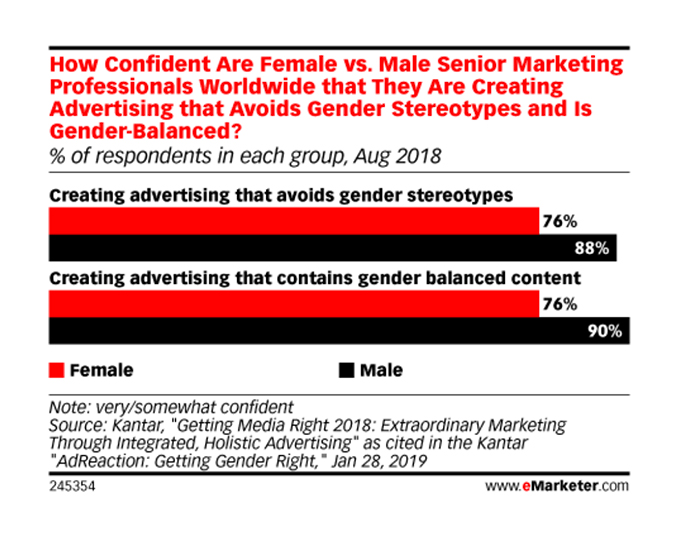Modal title
One fine body…
February 27, 2019
Do Marketers Use Gender Stereotypes?
 However, Kantar also found that 98% of the people targeted for baby products, laundry products and household cleaners are female. Is this effective? Well, what many marketers who use primarily female-focused approaches ignore is that, in many product categories, both genders are decision-makers. We spoke with Tiffany Vasilchik, chief growth officer at gender-balanced brand consultancy Landor, about acknowledging gender, evading stereotypes, and how taking socially responsible risks opens companies up to a wider, more inclusive consumer base. eMarketer: How do brands that havenÕt taken a gender-balanced or neutral position in the past preposition themselves to do so? Vasilchik: The best examples of that are Fiona Carter, chief brand officer at AT&T, and Antonio Lucio when he was CMO at HP. What they realized, and what all big marketers are realizing, is you have to be representative of the people who are buying your products. You also have to be inclusive and open and make sure youÕre not going the easiest routeÑbut that youÕre going the route that is reflective of your consumers. I think when you do get the commitment of these big companies, they can make a huge impact, because they're buying a lot of advertising. eMarketer: How do you implement gender targeting in instances where a masculine or feminine approach is more appropriate? Vasilchik: The key is to not do it in a gender-stereotypical manner. Don't assume that men are embarrassed to talk about feminine hygiene productsÑfathers are teaching their daughters. Consumers are more open, so marketers need to be, too. YouÕre starting to see a lot in the baby care category with more engaged dads. Ultimately, I think itÕs going back to your brandÕs purpose and intent, and then trying to deliver against that while portraying gender responsibly. There are absolutely times we shouldnÕt be afraid to use gender; gender is a very powerful thing. It just needs to be used appropriately and align with the brandÕs mission. eMarketer: What do you see for the future of gender-neutral or gender-balanced advertising? Vasilchik: As Gen Z grows up and has a more dominant voice in the culture, weÕre going to see an era where there are much higher expectations around openness and inclusivity. This generation is influenced by social values and are attracted to gender-neutral marketing. They have expectations for how they interact with brands, too. TheyÕre also going to force change as they come into a lot of buying power. Copyright 2019 eMarketer inc. All rights reserved. From https://www.emarketer.com. By Lucy Koch.
|
To view all articles, check out the Internet Travel Monitor Archive